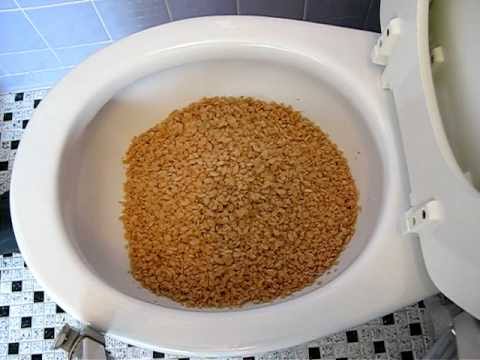Can One to Dispose of Food in the Toilet?
Can One to Dispose of Food in the Toilet?
Blog Article
We have uncovered this article about Flushing Food Down the Toilet? down the page on the web and concluded it made perfect sense to share it with you on my blog.

Intro
Lots of people are frequently confronted with the dilemma of what to do with food waste, specifically when it involves leftovers or scraps. One common concern that develops is whether it's alright to purge food down the toilet. In this short article, we'll look into the reasons that people may think about purging food, the repercussions of doing so, and alternate techniques for appropriate disposal.
Reasons individuals may take into consideration purging food
Lack of understanding
Some individuals may not know the possible harm caused by flushing food down the bathroom. They might wrongly believe that it's a safe method.
Benefit
Purging food down the commode may feel like a quick and easy solution to taking care of undesirable scraps, specifically when there's no close-by trash bin offered.
Negligence
In many cases, individuals may simply choose to flush food out of sheer laziness, without considering the consequences of their actions.
Consequences of flushing food down the bathroom
Environmental impact
Food waste that winds up in rivers can contribute to air pollution and injury aquatic ecosystems. In addition, the water used to flush food can strain water sources.
Pipes issues
Flushing food can cause clogged up pipelines and drains pipes, causing costly pipes repairs and troubles.
Types of food that need to not be flushed
Fibrous foods
Foods with fibrous structures such as celery or corn husks can get tangled in pipelines and create clogs.
Starchy foods
Starchy foods like pasta and rice can take in water and swell, leading to clogs in pipelines.
Oils and fats
Greasy foods like bacon or cooking oils need to never ever be purged down the bathroom as they can strengthen and create obstructions.
Appropriate disposal methods for food waste
Making use of a garbage disposal
For homes outfitted with waste disposal unit, food scraps can be ground up and purged with the plumbing system. However, not all foods are suitable for disposal in this manner.
Recycling
Particular food product packaging materials can be recycled, reducing waste and reducing ecological impact.
Composting
Composting is a green method to dispose of food waste. Organic materials can be composted and used to enrich dirt for gardening.
The importance of appropriate waste monitoring
Minimizing ecological injury
Proper waste management techniques, such as composting and recycling, assistance minimize contamination and maintain natural resources for future generations.
Securing pipes systems
By staying clear of the technique of flushing food down the commode, house owners can prevent expensive pipes repairs and maintain the honesty of their pipes systems.
Conclusion
In conclusion, while it may be alluring to flush food down the toilet for convenience, it is essential to understand the prospective consequences of this activity. By embracing correct waste administration methods and getting rid of food waste responsibly, people can contribute to much healthier pipes systems and a cleaner setting for all.
FLUSH FOOD DOWN THE TOILET?
FLUSHING FOOD CAN CAUSE BLOCKED DRAINS IN YOUR HOME
All of the plumbing fixtures in your home are connected to the same sewer pipe outside of your home. This outdoor sewer pipe is responsible for transporting all the wastewater from your home to the Council sewer mains. Even small pieces of food that go down the kitchen sink can cause problems for your sewer. It should therefore be obvious that flushing larger bits of food, such as meat, risks a clog in either the toilet itself or the sewer pipes. Flushing greasy food is even more problematic because oil coagulates when it cools, coating the interior lining of your pipes.
THE TOILET IS NOT A BIN
Food isn’t the only thing that people shouldn’t be flushing down the toilet. People use the toilet to dispose of all kinds of things such as tampons, makeup wipes, dental floss, kitty litter and even underwear. Water goes to great lengths to educate residents about the high costs and stress placed on wastewater treatment systems simply from people flushing the wrong stuff down the toilet. It costs taxpayers millions of dollars each year, and homeowners thousands in blocked drain repairs.
FLUSHING FOOD IS A WASTE OF WATER
Flushing food is a waste of our most precious resource - water. In June this year Level 1 water restrictions were introduced to protect water supply from drought conditions. Much of New South Wales continues to be affected by prolonged drought with recent figures revealing up to 97 per cent of the state remains in drought. Depending on whether you have a single or dual flush toilet, every single flush uses between five and 11 litres of water. In the current climate this is a huge amount of water to be wasting on flushing food that should be placed in the bin (or better yet, the compost).
https://www.jabplumbingsolutions.com.au/blog/can-you-flush-food-down-the-toilet

Hopefully you liked our topic about . Thanks a lot for taking a few minutes to read our piece of content. Remember to pause to promote this blog entry if you enjoyed reading it. Thanks a lot for being here. Revisit us soon.
Click On This Link Report this page